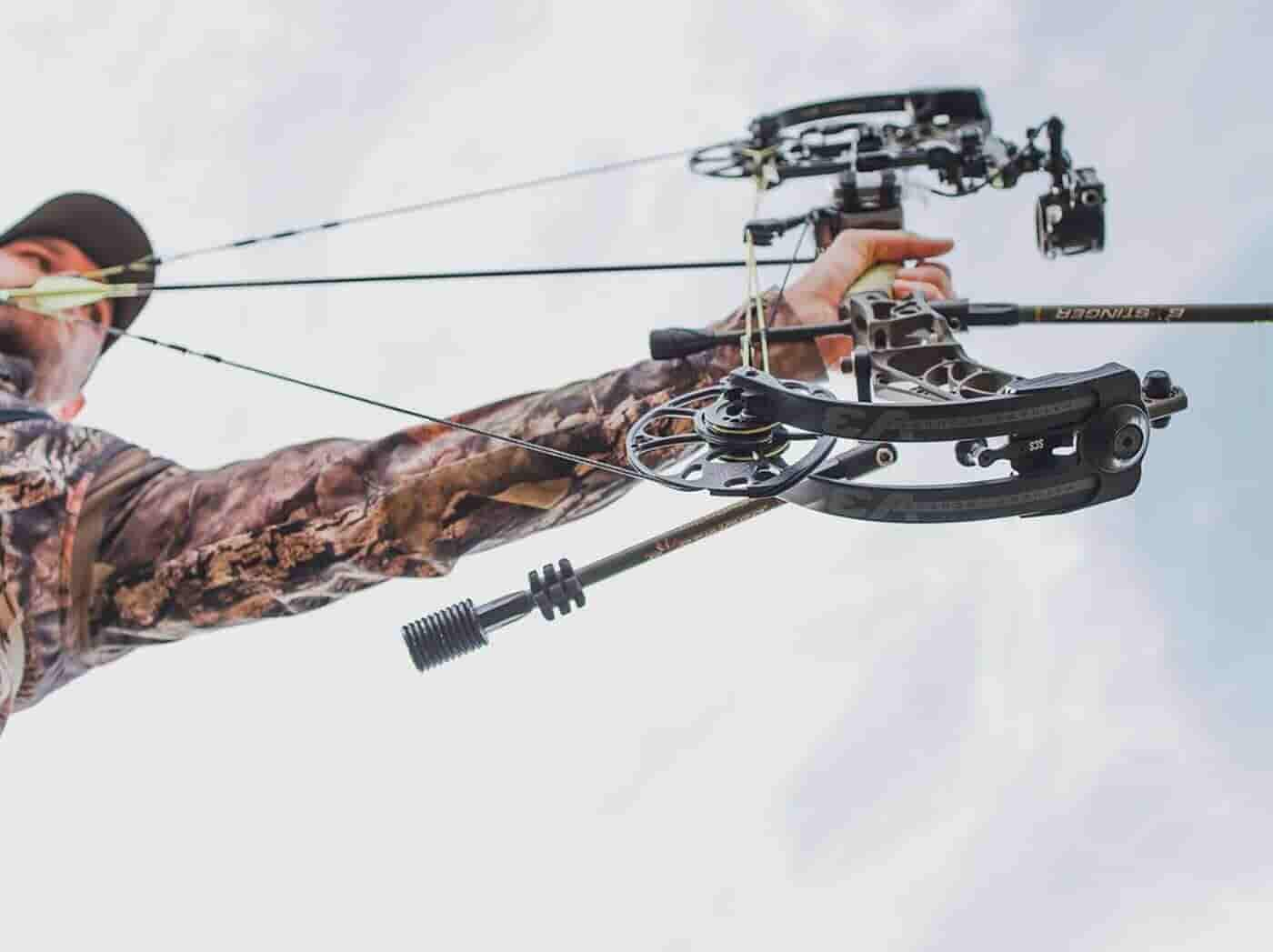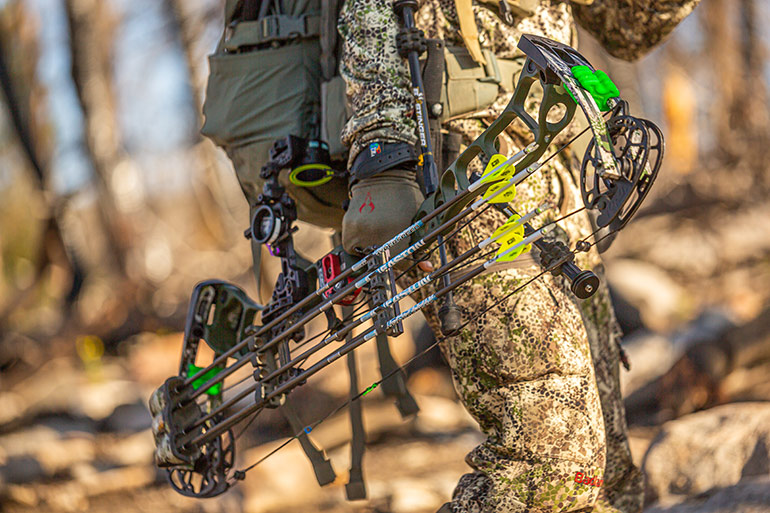Mastering Archery Stabilizers: A Full Guide for Beginners
Mastering Archery Stabilizers: A Full Guide for Beginners
Blog Article
The Ultimate Overview to Selecting the Right Archery Stabilizer for Improved Precision
Archery is a sport that requires precision and accuracy, and picking the best devices is important for attaining optimal results. Amongst the various accessories readily available, an archery stabilizer plays a considerable role in enhancing accuracy. Nonetheless, with so several choices on the marketplace, it can be overwhelming to establish which stabilizer is the ideal suitable for your demands. In this comprehensive guide, we will discover the vital elements to take into consideration when choosing an archery stabilizer for improved accuracy. From locating the optimum length to recognizing the different designs and products, we will dig into everything you require to know to make an educated choice. So, whether you are a seasoned archer aiming to update your tools or a novice seeking assistance, join us on this trip as we decipher the tricks to choosing the ideal archery stabilizer.
Size: Finding the Optimal Stabilizer Length
When picking an archery stabilizer for optimal efficiency,Determining the excellent stabilizer length is vital. The size of a stabilizer straight influences the balance, security, and accuracy of the bow. A stabilizer that is as well long can make the bow feel challenging and top-heavy to control, while a stabilizer that is also short may not supply enough security and dampening of resonances. Locating the right length needs taking into consideration factors such as the archer's shooting design, bow weight, and personal preference.
A longer stabilizer, usually varying from 8 to 12 inches, can provide higher security and decrease bow torque. This is especially useful for archers who shoot with a high draw weight or those who tend to torque the bow throughout the shot. The added length helps to disperse the weight equally and counterbalance any torque or activity.
On the various other hand, a much shorter stabilizer, typically in between 4 to 7 inches, supplies much more ability to move and quicker feedback. It is favored by archers that shoot with a reduced draw weight or those who need more movement, such as seekers or 3D shooters. The shorter size permits much easier activity with tight spaces and faster changes.
Ultimately, the ideal stabilizer size is an issue of personal choice and shooting style. It is suggested to trying out various lengths and observe the results on security and precision. Consulting with knowledgeable archers or experts can also supply valuable insights and recommendations.
Weight: Figuring Out the Appropriate Stabilizer Weight
After considering the optimal stabilizer length, the following vital element to take into consideration when choosing an archery stabilizer is identifying the ideal stabilizer weight - archery stabilizer. The weight of the stabilizer plays a critical role in boosting accuracy and stability during the shot
The weight of the stabilizer impacts the equilibrium and control of the bow. A larger stabilizer can give raised stability and control, particularly for shooters with a tendency for unstable hands or irregular shots. It helps to take in the vibrations and recoil produced by the bow, decreasing torque and reducing the effect on the arrow's trip.
On the various other hand, a lighter stabilizer allows for a quicker and more receptive bow. It can be beneficial for shooters that prioritize maneuverability and rate over stability. Lighter stabilizers also lower tiredness during long shooting sessions or competitions.
To determine the ideal stabilizer weight for your demands, it is very important to consider your shooting design, physical toughness, and bow arrangement. Trying out different weights and observing the effect on your capturing efficiency is essential to finding the excellent equilibrium.
Ultimately, the optimal stabilizer weight will certainly differ for every specific archer. It is suggested to begin with a moderate weight and make adjustments based on individual choice and capturing outcomes. Remember, the goal is to attain a regulated and stable shot, while also preserving comfort and ease of use.
Materials: Selecting the Right Products for Toughness and Performance
When choosing an archery stabilizer, it is essential to carefully take into consideration the products utilized in its construction to make certain sturdiness and enhance efficiency. The option of materials can significantly impact the total quality and performance of the stabilizer.
Among one of the most frequently utilized materials for stabilizers is carbon fiber. Carbon fiber offers a high strength-to-weight ratio, making it light-weight yet unbelievably strong. This material absorbs resonances and lowers bow torque, leading to improved security and accuracy. Furthermore, carbon fiber stabilizers are resistant to temperature level adjustments and are less likely to warp or bend in time.
One more prominent product for stabilizers is light weight aluminum. Light weight aluminum stabilizers are understood for their durability and rigidness. They offer excellent moistening capacities, lowering the amount of shock and vibration moved to the shooter's hand. Light weight aluminum stabilizers additionally provide a variety of personalization alternatives, permitting archers to adjust the weight and length to match their choices.
Some additional hints stabilizers are built utilizing a mix of materials. A stabilizer may have a carbon fiber core covered in an aluminum shell. This crossbreed style combines the ideal top qualities of both products, giving optimal security, toughness, and performance.
Style: Recognizing the Various Stabilizer Designs and Their Results
Thinking about the products made use of in archery stabilizers, it is essential to currently explore the various layouts of stabilizers and their corresponding effects. The style of an archery stabilizer plays a crucial role in boosting accuracy and minimizing resonance throughout the shot. There are a number of various designs readily available out there, each with its very own special characteristics.

Another preferred style is the side bar stabilizer. This layout includes affixing a short pole sideways of the bow, parallel to the primary long pole. Side bar stabilizers assist in counterbalancing the weight of accessories, such as views or quivers, and supply additional security to the bow.
Some stabilizers come with adjustable weights. These stabilizers allow archers to make improvements the balance and feel of their bows by including or getting rid of weights. This attribute is specifically helpful for archers that like a specific weight circulation or wish to explore different arrangements.
Furthermore, some stabilizers integrate wetting technology to reduce vibration and noise. These stabilizers usually have integrated dampeners or utilize materials that take in vibrations, leading to a smoother and quieter shot.

Accessories: Discovering Extra Accessories for Boosted Stability
To additionally boost stability in archery, extra devices can be utilized. These devices are developed to work in combination with the archery stabilizer to supply an also better level of useful source stability and precision. One such accessory is the V-bar or the side stabilizer place. This device permits the add-on of a second stabilizer, which aids to balance the bow and lower torque. By dispersing the weight equally on both sides of the bow, the V-bar helps to lessen any undesirable motion during the shot.
One more accessory that can boost stability is a bow sling. A bow sling is a strap that attaches to the bow and permits the archer to keep a relaxed hold on the bow take care of without the worry of dropping it (archery stabilizer). This unwinded grip assists to lower muscle mass tension and permits a more constant and steady shot
Additionally, a stabilizer weight system can be used to fine-tune the equilibrium and stability of the bow. These Clicking Here weight systems typically contain small weights that can be included or removed from the stabilizer to change the equilibrium point of the bow. By locating the optimal balance point, archers can accomplish a much more exact and secure shot.
Verdict
In final thought, choosing the appropriate archery stabilizer includes considering variables such as length, weight, products, design, and added accessories. The optimum stabilizer size and weight will certainly rely on individual choices and shooting style. Choosing long lasting materials is crucial for durable performance. Understanding the different stabilizer styles will certainly assist enhance accuracy. Lastly, checking out additional accessories can additionally enhance security throughout archery capturing.
Figuring out the perfect stabilizer length is crucial when picking an archery stabilizer for optimum efficiency. A stabilizer that is too long can make the bow really feel top-heavy and challenging to manage, while a stabilizer that is too brief might not offer enough security and dampening of resonances - archery stabilizer.Taking into account the products made use of in archery stabilizers, it is important to currently delve right into the different layouts of stabilizers and their particular impacts. Side bar stabilizers help in counteracting the weight of devices, such as quivers or sights, and give added security to the bow
These weight systems usually consist of tiny weights that can be included or gotten rid of from the stabilizer to change the balance factor of the bow.
Report this page